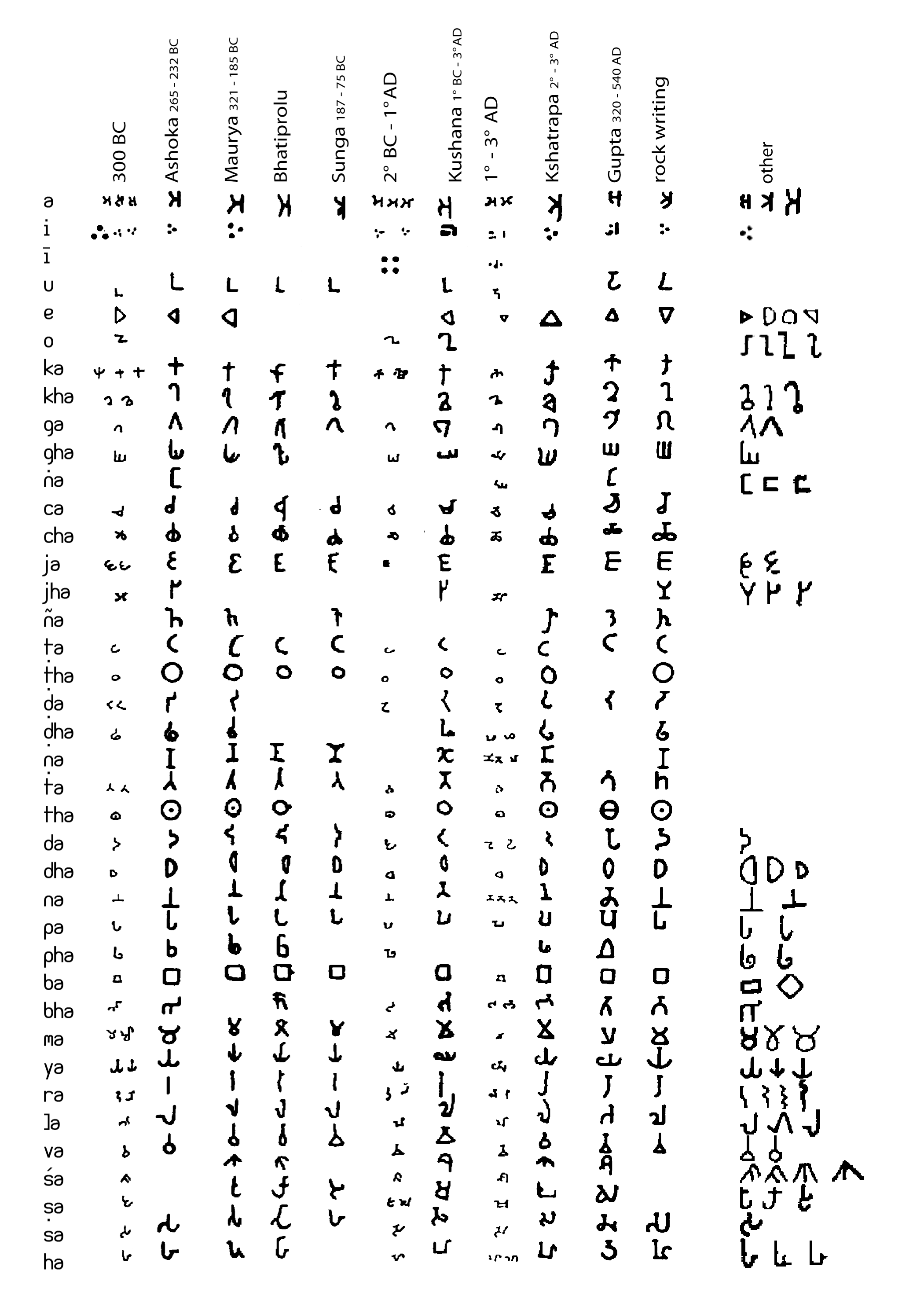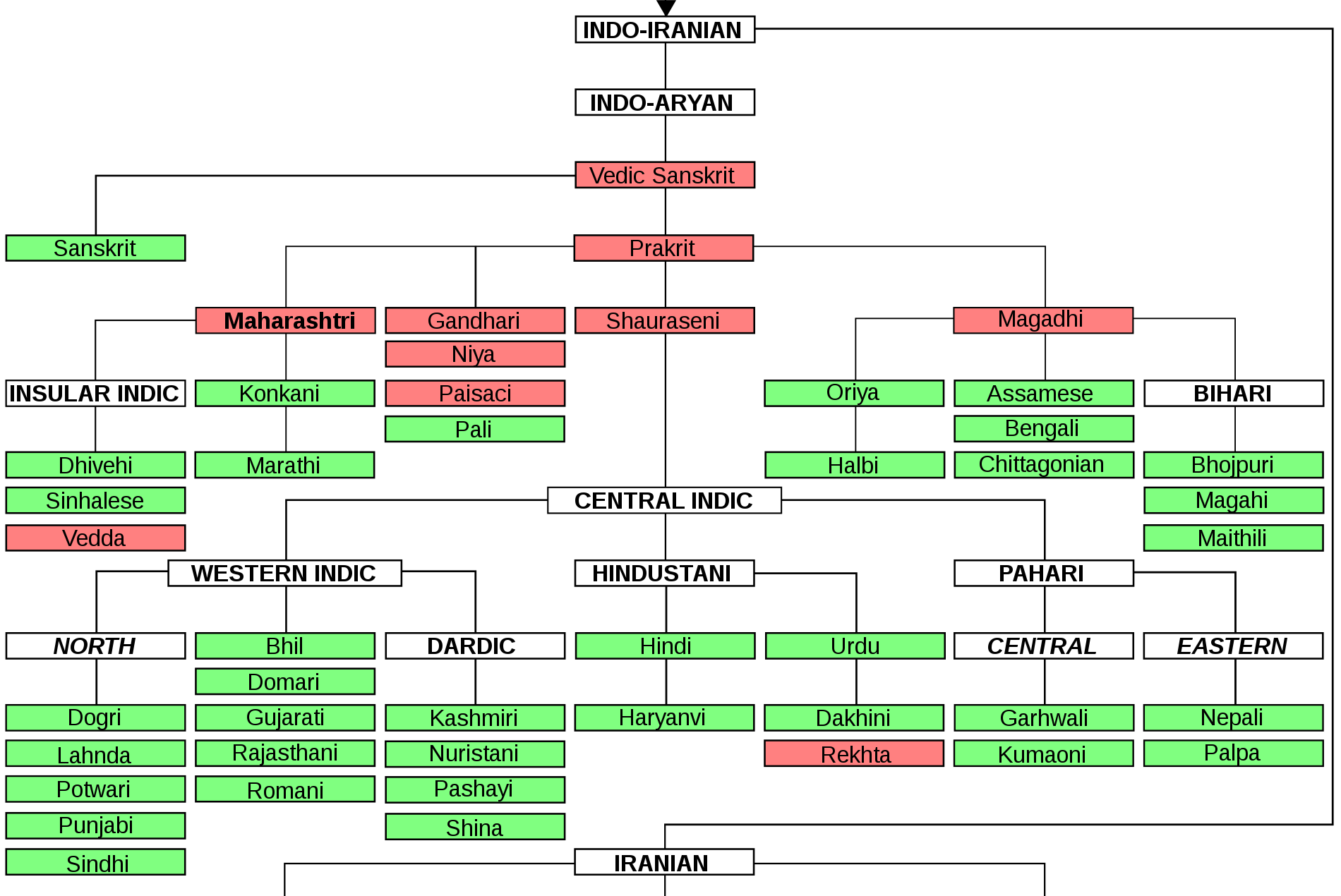|
Bhattiprolu Alphabet
The Bhattiprolu script is a variant of the Brahmi script which has been found in old inscriptions at Bhattiprolu, a small village in the erstwhile Guntur district of Andhra Pradesh, India. It is located in the fertile Krishna River delta and the estuary region where the river meets the Bay of Bengal. The inscriptions date to between the 3rd and 1st centuries BCE, putting them among the earliest evidence of Brahmi writing in South India. Bhattiprolu differs from Ashokan Brahmi in two significant ways. First, the letters ''gh, j, m, l, s'' are "radically different": ''m'' is upside-down compared to Brahmi, while ''gh'' appears to derive from ''g'' rather than from Semitic ''heth''. Secondly, the inherent vowel has been discarded: A consonant written without diacritics represents the consonant alone. This is unique to Bhattiprolu among the early Indian scripts. Discovery Excavations that started in the year 1870 by Boswell, Sir Walter Elliot, Robert Sewell, Alexander Rea, ... [...More Info...] [...Related Items...] OR: [Wikipedia] [Google] [Baidu] |
Abugida
An abugida (; from Geʽez: , )sometimes also called alphasyllabary, neosyllabary, or pseudo-alphabetis a segmental Writing systems#Segmental writing system, writing system in which consonant–vowel sequences are written as units; each unit is based on a consonant letter, and vowel notation is secondary, similar to a diacritical mark. This contrasts with a full alphabet, in which vowels have status equal to consonants, and with an abjad, in which vowel marking is absent, Abjad#Impure abjads, partial, or optional – in less formal contexts, all three types of the script may be termed "alphabets". The terms also contrast them with a syllabary, in which a single symbol denotes the combination of one consonant and one vowel. Related concepts were introduced independently in 1948 by James Germain Février (using the term ) and David Diringer (using the term ''semisyllabary''), then in 1959 by Fred Householder (introducing the term ''pseudo-alphabet''). The Ethiopian Semitic langu ... [...More Info...] [...Related Items...] OR: [Wikipedia] [Google] [Baidu] |
Krishna River
The Krishna River in the Deccan Plateau, Deccan plateau is the third-longest in India, after the Ganga, Ganga and Godavari. It is also the fourth-largest in terms of water inflows and river basin area in India, after the Ganga, Indus and Godavari. The river, also called Krishnaveni, is long and its length in Maharashtra is 282 kilometres. It is a major source of irrigation in the Indian states of Maharashtra, Karnataka, Telangana and Andhra Pradesh. Course The Krishna River originates in the Western Ghats near Mahabaleshwar at an elevation of about , in the state of Maharashtra in central India. From Mahabaleshwar, it flows to the town of Wai and continues east until it empties into the Bay of Bengal. The Krishna River passes through the Indian states of Maharashtra, Karnataka, Andhra Pradesh, and Telangana. Over its length, it flows for in Maharashtra, in Karnataka and in Andhra Pradesh. Tributaries The Krishna River has 13 major tributaries. Its principal tributaries in ... [...More Info...] [...Related Items...] OR: [Wikipedia] [Google] [Baidu] |
Indo-Aryan Languages
The Indo-Aryan languages, or sometimes Indic languages, are a branch of the Indo-Iranian languages in the Indo-European languages, Indo-European language family. As of 2024, there are more than 1.5 billion speakers, primarily concentrated east of the Indus river in Bangladesh, Northern India, Eastern Pakistan, Sri Lanka, Maldives and Nepal. Moreover, apart from the Indian subcontinent, large immigrant and expatriate Indo-Aryan–speaking communities live in Northwestern Europe, Western Asia, North America, the Caribbean, Southeast Africa, Polynesia and Australia, along with several million speakers of Romani languages primarily concentrated in Southeast Europe, Southeastern Europe. There are over 200 known Indo-Aryan languages. Modern Indo-Aryan languages descend from Old Indo-Aryan languages such as early Vedic Sanskrit, through Middle Indo-Aryan languages (or Prakrits). The largest such languages in terms of First language, first-speakers are Hindustani language, Hindi–Urdu ... [...More Info...] [...Related Items...] OR: [Wikipedia] [Google] [Baidu] |
Paleography
Palaeography (American and British English spelling differences#ae and oe, UK) or paleography (American and British English spelling differences#ae and oe, US) (ultimately from , , 'old', and , , 'to write') is the study and academic discipline of historical writing systems. It encompasses the historicity of manuscripts and texts, subsuming deciphering and dating of historical manuscripts, as well as the analysis of historic penmanship, handwriting script, signification, and printed media. It is primarily concerned with the forms, processes and relationships of writing and printing systems as evident in a text, document or manuscript; and analysis of the substantive textual content of documents is a secondary function. Included in the discipline is the practice of deciphering, reading, and dating manuscripts, and the cultural context of writing, including the methods with which texts such as manuscripts, books, codices, Tract (literature), tracts, and monographs were produced, a ... [...More Info...] [...Related Items...] OR: [Wikipedia] [Google] [Baidu] |
Prakrit
Prakrit ( ) is a group of vernacular classical Middle Indo-Aryan languages that were used in the Indian subcontinent from around the 5th century BCE to the 12th century CE. The term Prakrit is usually applied to the middle period of Middle Indo-Aryan languages, excluding Pali. The oldest stage of Middle Indo-Aryan language is attested in the inscriptions of Ashoka (ca. 260 BCE), as well as in the earliest forms of Pāli, the language of the Theravāda Buddhist canon. The most prominent form of Prakrit is Ardhamāgadhı̄, associated with the ancient kingdom of Magadha, in modern Bihar, and the subsequent Mauryan Empire. Mahāvı̄ra, the last tirthankar of 24 tirthankar of Jainism, was born in Magadha, and the earliest Jain texts were composed in Ardhamāgadhı̄. Etymology There are two major views concerning the way in which Sanskrit and Prakrit are related. One holds that the original matter in question is the speech of the common people, unadorned by grammar, and that p ... [...More Info...] [...Related Items...] OR: [Wikipedia] [Google] [Baidu] |
Brāhmī Script
Brahmi ( ; ; ISO 15919, ISO: ''Brāhmī'') is a writing system from ancient India. "Until the late nineteenth century, the script of the Aśokan (non-Kharosthi) inscriptions and its immediate derivatives was referred to by various names such as 'lath' or 'Lat', 'Southern Aśokan', 'Indian Pali', 'Mauryan', and so on. The application to it of the name Brahmi [''sc. lipi''], which stands at the head of the Buddhist and Jaina script lists, was first suggested by T[errien] de Lacouperie, who noted that in the Chinese Buddhist encyclopedia ''Fa yiian chu lin'' the scripts whose names corresponded to the Brahmi and Kharosthi of the ''Lalitavistara'' are described as written from left to right and from right to left, respectively. He therefore suggested that the name Brahmi should refer to the left-to-right 'Indo-Pali' script of the Aśokan pillar inscriptions, and Kharosthi to the right-to-left 'Bactro-Pali' script of the rock inscriptions from the northwest." that appeared as a fully ... [...More Info...] [...Related Items...] OR: [Wikipedia] [Google] [Baidu] |
Mauryan
The Maurya Empire was a geographically extensive Iron Age historical power in South Asia with its power base in Magadha. Founded by Chandragupta Maurya around c. 320 BCE, it existed in loose-knit fashion until 185 BCE. The primary sources for the written records of the Mauryan times are partial records of the lost history of Megasthenes in Roman texts of several centuries later; the Edicts of Ashoka, which were first read in the modern era by James Prinsep after he had deciphered the Brahmi and Kharoshthi scripts in 1838; and the ''Arthashastra'', a work first discovered in the early 20th century,: "... another source that enjoyed high standing as a description of the early Mauryan state was the Arthashastra, a treatise on power discovered in the early twentieth century." and previously attributed to Chanakya, but now thought to be composed by multiple authors in the first centuries of the common era. Archaeologically, the period of Mauryan rule in South Asia falls in ... [...More Info...] [...Related Items...] OR: [Wikipedia] [Google] [Baidu] |
Buddha
Siddhartha Gautama, most commonly referred to as the Buddha (),* * * was a wandering ascetic and religious teacher who lived in South Asia during the 6th or 5th century BCE and founded Buddhism. According to Buddhist legends, he was born in Lumbini, in what is now Nepal, to royal parents of the Shakya clan, but renounced his home life to live as a wandering ascetic. After leading a life of mendicancy, asceticism, and meditation, he attained nirvana at Bodh Gayā in what is now India. The Buddha then wandered through the lower Indo-Gangetic Plain, teaching and building a monastic order. Buddhist tradition holds he died in Kushinagar and reached ''parinirvana'' ("final release from conditioned existence"). According to Buddhist tradition, the Buddha taught a Middle Way between sensual indulgence and severe asceticism, leading to freedom from ignorance, craving, rebirth, and suffering. His core teachings are summarized in the Four Noble Truths and the Noble Ei ... [...More Info...] [...Related Items...] OR: [Wikipedia] [Google] [Baidu] |
Stupa
In Buddhism, a stupa (, ) is a domed hemispherical structure containing several types of sacred relics, including images, statues, metals, and '' śarīra''—the remains of Buddhist monks or nuns. It is used as a place of pilgrimage and meditation. Walking around a stupa in a clockwise direction, known as '' pradakhshina'', has been an important ritual and devotional practice in Buddhism since the earliest times, and stupas always have a ''pradakhshina'' path around them. The original South Asian form is a large solid dome above a tholobate, or drum, with vertical sides, which usually sits on a square base. There is no access to the inside of the structure. In large stupas, there may be walkways for circumambulation on top of the base as well as on the ground below it. Large stupas have, or had, ''vedikā'' railings outside the path around the base, often highly decorated with sculpture, especially at the torana gateways, of which there are usually four. At the top of ... [...More Info...] [...Related Items...] OR: [Wikipedia] [Google] [Baidu] |
Alexander Rea
Alexander Rea (17 October 1858 — 4 February 1924) was a British archaeologist who worked mainly in South British India. He is known for unearthing a sarcophagus from the hillocks of Pallavaram in Tamil Nadu. Early life Rea was born in Dundee and educated at Glasgow. He is a F.S.A (Scot). He reached British India in 1882 and joined the Archaeological survey of Southern India. Career First Assistant. Archaeological Survey of South India in 1882. He worked as acting lecturer on Art and Geometry in the School of Arts. Madras, between 1884 and 1888. He was Professional Adviser to Government on the conservation of ancient monuments; Member for Archaeology on the Sub-Committee on the Public Services Commission in 1887. Rea was deputed to examine and report on certain Pre-historic burial places in Madras, Chingleput, and Kodaikanal in July 1887. Rea worked as assistant editor, "Epigraphia Indica" and Record of the Archaeological Survey of India in 1888. He took charge as In charge of ... [...More Info...] [...Related Items...] OR: [Wikipedia] [Google] [Baidu] |
Robert Sewell (historian)
Robert Sewell (4 June 1845 – 30 December 1925) worked in the civil service of the Madras Presidency during the period of colonial rule in India. He was Keeper of the Madras Record Office and was tasked with responsibility for documenting ancient inscriptions and remains in the region, As with other British administrators of his type at that period, his purpose was not scholarly but rather to bolster administrative control by constructing a history that placed British rule as a virtue and a necessity rather than something to be denigrated. Portrayal of historic factionalism among local figureheads and dominion by alien despots would, it was thought, enhance the perception that only the British could rescue the country from its past. Sewell's specialism was the Vijayanagara Empire, about which he authored ''A Forgotten Empire Vijayanagar: A Contribution to the History of India'' (1900). Burton Stein described this book as Sewell's Sewell undertook archaeological work, including ... [...More Info...] [...Related Items...] OR: [Wikipedia] [Google] [Baidu] |







